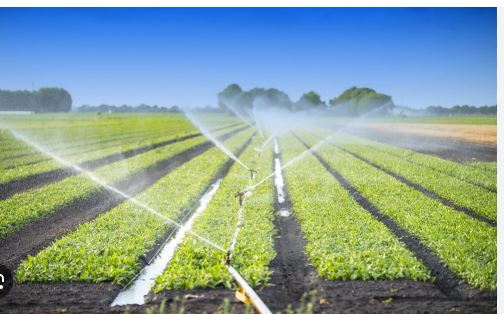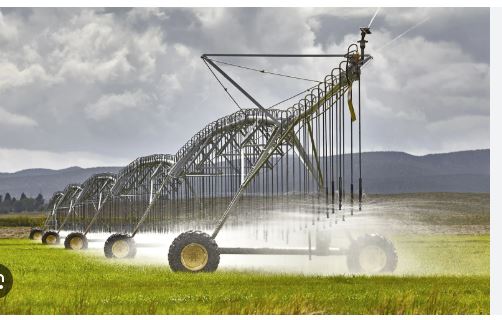
Irrigation systems are critical for delivering water to crops, landscapes, or gardens, enhancing agricultural productivity, conserving water, and supporting plant growth in areas with insufficient rainfall. These systems vary in design, efficiency, and suitability, depending on factors like crop type, soil, climate, and water availability.
Operating through diverse mechanisms, irrigation systems distribute water via gravity, pressure, or capillary action. They range from simple, low-cost setups to complex, automated networks, balancing efficiency with environmental impact. Proper design ensures uniform water application, minimizing waste and supporting healthy plant development.
These systems are adaptable to different terrains and soil types, from flat fields to sloping orchards. They support a range of crops, including grains, vegetables, and ornamentals, optimizing yields in arid or temperate regions. Energy needs and maintenance vary, influencing their suitability for small or large-scale operations.
Efficient irrigation systems reduce water loss through evaporation or runoff, promoting sustainability. Automation, sensors, and precise scheduling enhance resource use, though initial costs can be high. Warning: Over-irrigation risks soil salinization, while under-irrigation stresses plants, reducing productivity.

Types of Irrigation Systems
Surface Irrigation
Surface irrigation involves applying water directly to the soil surface, allowing it to flow across fields via gravity. Common methods include furrow (channels between crop rows), basin (flooded level plots), and border (strips separated by ridges). Used for crops like rice, wheat, and orchards in flat or gently sloping areas with clay or loam soils, it’s cost-effective and simple but inefficient (30–60% water use efficiency) due to runoff and evaporation. Regular maintenance of channels prevents waterlogging. Best for regions with abundant water, it’s prone to soil erosion if mismanaged.
Drip Irrigation
Drip irrigation delivers water directly to plant roots through a network of tubes, pipes, and emitters, minimizing waste. Ideal for high-value crops (e.g., vegetables, fruits, vineyards) in arid regions or sandy soils, it achieves 90–95% efficiency by reducing evaporation and runoff. Emitters release 0.5–4 liters/hour, controlled by timers or sensors. Though installation costs are high ($1,500–$2,500/acre), it saves water and fertilizers, enhances yields, and suits uneven terrain. Clogging and maintenance are challenges, requiring regular filter cleaning.
Sprinkler Irrigation
Sprinkler irrigation mimics rainfall by spraying water through nozzles under pressure, distributed via pipes and pumps. Systems include center-pivot (rotating sprinklers), lateral-move, or solid-set sprinklers, suitable for crops like corn, alfalfa, and lawns on various soils. Efficiency ranges from 70–85%, with losses from wind drift and evaporation. It’s versatile for uneven terrain but requires energy for pumps (2–5 kW/ha) and regular maintenance to prevent nozzle clogging. Overuse can cause soil compaction or runoff.
Subsurface Irrigation
Subsurface irrigation applies water below the soil surface through buried pipes or drip lines, targeting root zones directly. Used for crops like cotton, sugarcane, or turf in water-scarce areas, it achieves 90–95% efficiency by minimizing evaporation and surface runoff. Ideal for sandy or loamy soils, it reduces weed growth and soil disturbance but is costly ($2,000–$3,500/acre) and prone to root intrusion or clogging. Regular flushing and monitoring maintain system longevity, making it sustainable for precision agriculture.
Flood Irrigation
Flood irrigation, a form of surface irrigation, involves flooding entire fields with water, often using canals or gates. Common for rice paddies and some orchards in flat, clay-rich areas, it’s low-cost and simple but inefficient (40–60% efficiency) due to high evaporation and uneven distribution. It suits water-tolerant crops but risks waterlogging and salinization if poorly managed. Controlled flooding with laser-leveled fields improves uniformity, though it’s less viable in water-scarce regions.
Micro-Sprinkler Irrigation
Micro-sprinkler irrigation uses low-pressure, small-scale sprinklers to deliver fine water sprays to specific areas, ideal for orchards, greenhouses, or nurseries. Operating at 10–30 psi, it targets tree canopies or root zones, achieving 80–90% efficiency. Suitable for sandy or rocky soils, it supports frost protection and fertigation but is susceptible to wind drift and clogging. Installation costs ($1,000–$2,000/acre) are moderate, with automated systems enhancing precision for high-value crops like citrus or berries.
Furrow Irrigation
Furrow irrigation, a surface method, channels water through small trenches between crop rows, used for row crops like maize, soybeans, or cotton on gentle slopes. Water infiltrates laterally to reach roots, with 50–70% efficiency due to runoff and deep percolation losses. It’s low-cost and adaptable to various soils but requires precise slope management to prevent erosion. Surge irrigation (intermittent water pulses) improves uniformity, though labor for furrow maintenance is a drawback.
Center-Pivot Irrigation
Center-pivot irrigation uses a rotating sprinkler system anchored at a central pivot, watering circular patterns (up to 130 acres per pivot). Common for large-scale crops like wheat, corn, or potatoes in flat areas, it achieves 80–90% efficiency with low-pressure nozzles. Automated controls adjust water rates, but high costs ($50,000–$100,000/unit) and energy needs (5–10 kW/ha) limit small-farm use. It’s ideal for sandy soils but leaves field corners unirrigated unless supplemented.
Lateral-Move Irrigation
Lateral-move irrigation involves a sprinkler system that moves linearly across rectangular fields, guided by cables or GPS, watering crops like alfalfa, soybeans, or vegetables. Covering up to 100 acres, it achieves 80–90% efficiency with uniform application. Suited for flat terrain and loamy soils, it’s costly ($40,000–$80,000/system) and energy-intensive but versatile for large farms. Regular maintenance prevents wheel rutting, and automation optimizes water use.
Bubbler Irrigation
Bubbler irrigation delivers water in small streams or bubbles directly to plant bases via low-pressure tubes, ideal for orchards, vineyards, or landscapes with clay soils. Operating at 5–20 psi, it achieves 85–90% efficiency by minimizing runoff and evaporation. It suits level terrain and large-rooted plants but requires careful design to avoid pooling. Installation costs ($1,200–$2,500/acre) are moderate, with low maintenance if filters prevent clogging.
Traveling Gun Irrigation
Traveling gun irrigation uses a large, mobile sprinkler (gun) pulled across fields by a hose or cable, spraying water in a wide arc. Suitable for pastures, sugarcane, or forage crops on varied terrain, it covers 10–50 acres with 70–80% efficiency. High-pressure systems (60–100 psi) require significant energy (10–20 kW), and wind can reduce uniformity. Costs ($10,000–$20,000/unit) are moderate, but labor for repositioning and runoff risks are drawbacks.
Seepage Irrigation
Seepage irrigation, used in flat, high-water-table areas like Florida’s citrus groves, involves raising the water table through canals or ditches to supply subsoil moisture. Ideal for sandy soils and water-tolerant crops, it’s low-cost but inefficient (40–60% efficiency) due to evaporation and overwatering. It risks salinization and nutrient leaching, requiring careful water table monitoring. Pumps or gravity systems maintain levels, but it’s unsustainable in water-scarce regions.
Mist Irrigation
Mist irrigation delivers water as a fine mist through high-pressure nozzles, creating a fog-like spray that moistens plant foliage and soil. Ideal for greenhouses, nurseries, or delicate crops like lettuce and herbs, it maintains high humidity and cools plants in hot climates (25–35°C). Operating at 50–100 psi, it achieves 85–90% efficiency but is susceptible to wind drift and evaporation. Used on loamy or sandy soils, it supports seedling growth and frost protection. Installation costs ($2,000–$4,000/acre) are high, and regular nozzle cleaning prevents clogging. Energy demands (5–10 kW/ha) and precise automation are required for optimal performance.
Canal Irrigation
Canal irrigation involves diverting water from rivers or reservoirs through a network of lined or unlined canals to fields, relying on gravity for distribution. Common in large-scale agriculture for crops like rice, wheat, or sugarcane in flat, clay-rich regions, it’s low-cost but inefficient (40–60% efficiency) due to seepage and evaporation losses. Canals require regular maintenance to prevent siltation or breaches, and water allocation must be managed to avoid over- or under-irrigation. Suited for areas with abundant water, it risks salinization and is less viable in water-scarce regions.
Hose-Reel Irrigation
Hose-reel irrigation uses a retractable hose connected to a high-pressure sprinkler or gun, pulled across fields to water crops like pastures, vegetables, or orchards. Covering 10–40 acres, it operates at 60–120 psi with 70–80% efficiency, suitable for varied terrains and loamy soils. Its mobility allows flexible application, but energy costs (10–15 kW) and labor for repositioning are drawbacks. Installation costs ($15,000–$25,000/unit) are moderate, and wind can reduce uniformity, requiring careful scheduling to avoid runoff.
Rain Gun Irrigation
Rain gun irrigation employs large, high-pressure sprinklers (rain guns) to deliver water in wide arcs, covering large areas (1–5 acres per gun) for crops like sugarcane, maize, or fodder. Operating at 70–100 psi, it achieves 70–85% efficiency but loses water to wind and evaporation. Suited for flat or gently sloping fields with loamy soils, it’s cost-effective ($5,000–$10,000/unit) but energy-intensive (15–20 kW). Regular maintenance prevents nozzle wear, and it’s less suitable for delicate crops due to heavy droplet impact.
Wick Irrigation
Wick irrigation uses absorbent materials (e.g., cotton or fiberglass wicks) to passively draw water from a reservoir to plant roots, ideal for small-scale gardens, potted plants, or hydroponics. Achieving 90–95% efficiency, it minimizes waste and suits water-sensitive plants like orchids or herbs in controlled environments. It’s low-cost ($50–$200/system) and requires no energy, but wicks can degrade or clog, needing replacement. Best for sandy or soilless media, it’s impractical for large fields due to limited water delivery.
Subirrigation
Subirrigation raises the water table or delivers water to root zones through underground pipes or tiles, used in greenhouses or high-water-table areas for crops like tomatoes, peppers, or turf. It achieves 85–90% efficiency by reducing evaporation, ideal for clay or loamy soils. Costly ($3,000–$5,000/acre) and complex to install, it risks waterlogging or salt buildup without proper drainage. Automated sensors optimize water levels, but high maintenance (pipe flushing) is essential to prevent blockages.